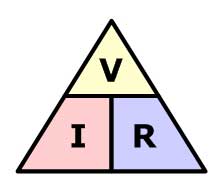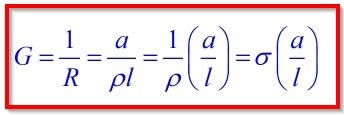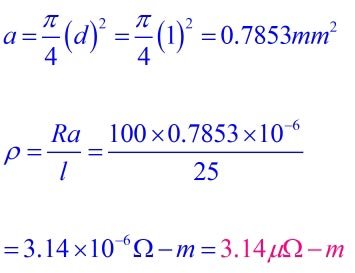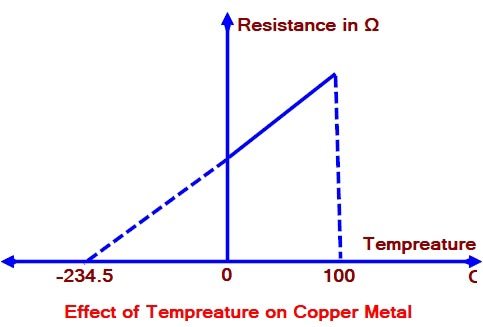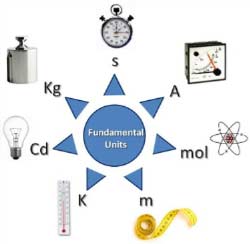Fundamental of Electrical Engineering | Resistance And Conductance
Resistance
It may be defined as the property of a substance due to which it opposes (or restricts) the flow of electricity (i.e., electrons) through it. Or Electric resistance can be defined as the capability of a material to block the flow of electric current to pass through it.
Let us Imagine that water flowing through a pipe. If the inside of the pipe is smooth and shiny the water will flow quickly. If the inside is rough it will flow slower. If the inside is filled with a sponge it will be slower again and if the inside is filled with concrete it won’t flow at all. The same is true for electrons moving through a cable at the microscopic level.
The concept of resistance is analogous to the friction involved in the mechanical motion. Higher the availability of the free electrons, lesser will be the opposition to the flow of current. As discussed in the Concept of current and Electromotive force When the flow of electrons is established in the metal, the ions get formed and these free electrons travel in the specific direction when connected to an external supply source. These electrons while flowing pass through the molecules or the ions of the conductor. So such ions always become an obstruction for the flowing electrons. Hence there is the collision between ions and free-flowing electrons, thereby producing heat and reducing the speed of the electron.
Materials that possess a large number of free electrons and hence offer less opposition to the flow of current. Such elements are classified as the ‘Conductors’ of electricity. While in some materials the number of Free electrons is very less hence offering greater resistance to the flow of current. Such elements are classified as the “Insulator” of electricity. Conductive Order of Some metals of equally sized Sample is given below
The Unit of Resistance
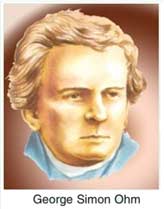
For insulators whose resistances are very high, a much bigger unit is used i.e., mega-ohm = 106 ohm (the prefix ‘mega’ or mego meaning a million) or kilo-ohm = 103 ohm. In the case of very small resistances, smaller units like milli-ohm = 10−3 ohm or micro-ohm = 10−6 ohm are used. Some of the examples is given below
Ohm’s Law
Ohm’s law states that electric current flowing through the conductor is directly proportional to the potential difference between its two ends when the temperature and other physical parameters of the conductor remain unchanged.
Assuming (VAB) be the Potential difference between the two ends A and B of a conductor, with terminal A at higher potential, current (I) being flowing through the conductor, we can write as per Ohm‘s law
VAB ∝ I
or VAB = R.I
(Where R is the resistance of the conductor which is constant in the equation of Proportionality)
Thus
where I is the current through the conductor in units of amperes,
V is the voltage measured across the conductor in units of volts,
R is the resistance of the conductor in units of ohms.
Ohms Law Triangle
- Ohm’s law triangle is the pictorial method of representing the Ohm’ law relationship. This method helps us to manipulate Ohm’s Formula in a very simple way.
- Notice the triangle and how itis divided.
- The letter V is located in the top compartment.
- The letter I is located in the lower-left compartment
- The letter R is located in the lower right compartment.
- To use the Ohm’s law triangle, you simply mark the compartment of the variable that you are trying to find. The remaining compartments show you the formula that you should use.
Factors Affecting the Resistance
The resistance R offered by a conductor depends on the following factors :
- Length of the material (l): The resistance of a material is directly proportional to the length. The resistance of the longer wire is more.
- Cross-Section Area (a): The resistance of a material is inversely proportional to the cross-sectional area of the material. The more cross-sectional area allowed the passage of more number of electrons offering less resistance.
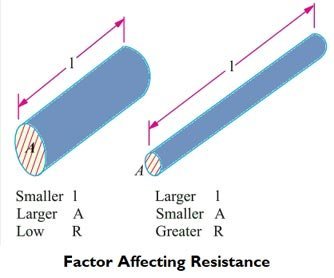
- Nature of Material: As discussed earlier the conductor has a large number of free electrons hence it offers less resistance whereas Inductor has less number of free electrons hence it offers more resistance.
- Temperature: The temperature of the material affects the value of the resistance. In General case, the resistance of the material increases as its temperature increases.
So for any given material at a certain given temperature, the resistance is given as
where ρ is a constant and known as its specific resistance or resistivity.
l = Length in Meter
a = area of cross-section in m2
R = Resistance in Ohm
Unit of Resistivity
Specific Resistance depends only on temperature and material of the conductor but not on its dimensions of the conductor, on which resistance depends, and mechanical deformation such as stretching etc. As ρ depends only on the material of a conductor at a given temperature, hence it is a characteristic constant.
Definition: The resistance of a material having unit length and the unit cross-sectional area is known as Specific Resistance or Resistivity.
In the S.I. system of units
Hence, the unit of resistivity is ohm-meter (Ω-m).
Material with the highest Value of resistivity is the best insulator while the material with the low value of resistivity is a good conductor.
Conductance
The electrical resistance of an electrical conductor is a measure of the difficulty to pass an electric current through that conductor. The inverse quantity is electrical conductance and is the ease with which an electric current passes. Electrical conductance is measured in siemens (S) σ and denoted by (G).
Material having high value of conductivity is good conductor of electricity while the material having the low value of conductivity is good insulator.
Ques.1 A coil consists of 2000 turns of copper wire having a cross-sectional area of 0.8 mm2.The mean length per turn is 80
cm and the resistivity of copper is 0.02 μ Ω –m. Find the resistance of the coil.
Sol: Length of the coil, l = 0.8 × 2000 = 1600 m
A = 0.8 mm2 = 0.8 × 10−6 m2
Ques 2. The resistance of the copper wire is 25 m long is 100Ω. If its diameter is 1mm, calculate the resistivity of the copper
Sol: Length = 25 m, d = 1mm, R =100Ω




